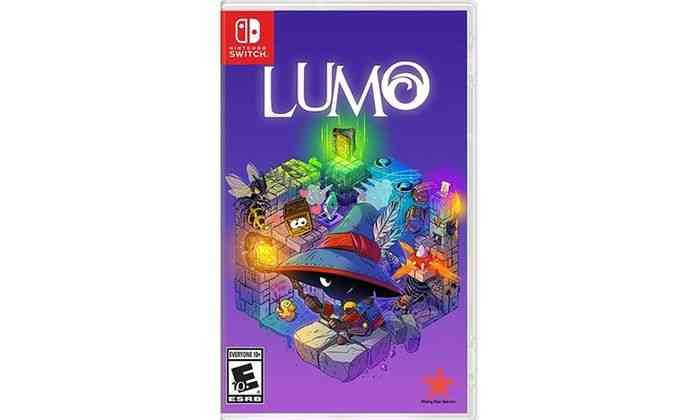Lumo Review
We all love a good dungeon crawl; a chance to delve from room to room through unexplored territory, solving puzzles and finding our way to the end. But what if the essence of the game relies on the journey through the dungeon and not the destination? Developed by Triple Eh?, Lumo is a quaint, minimalistic, multi-room puzzler that is an excellent example of being greater than the sum of its parts. Players begin as a normal everyday kid who walks into a small and simple gaming convention. It’s more like a house set up for a LAN party honestly, but there is one computer in the back available to you. As soon as you reach it, the player is transported inside the game and that is when the literal magic begins. The player will find themselves transformed into a short little wizard, limited for the first portion of the game by merely having the ability to jump and nothing else. You will eventually discover the main characters staff which can illuminate the room and send enemies running, but not before encountering what makes Lumo a charming and deceptive puzzler.
The game is constructed almost entirely of puzzles, having to solve each one to progress through the dungeon. What’s more, the game does nothing to bog you down with instruction, narrative, dialogue, or anything else resembling a word – be it written or spoken. Much like playing an older arcade game, you are simply dropped in and made to adapt and survive which works fantastically well: something about this minimalist style gives the tiny hero and his room by room adventure more heart and warmth. The puzzles themselves start out with the basics to understand the mechanics and physics of manipulating a room but quickly become a complex series of actions that will be challenging but rewarding to further the adventure. It’s strange to think how apathetic the hero is for the same accomplishment that will surely make you happy.
In keeping with the idea of small, simple, and minimalist, Lumo’s stages are traversed by going room to room, but the style in which they execute it is wholly unique: going through a door feels like the previous room ceases to exist, and the parts that made it up come together to make an entirely new room. It sounds strange to take notice of what it’s like to go to the next room, but I feel it’s important to note how much it makes the game stand out. With the focus on the puzzles and rooms themselves – almost as a second character to the game – the main problem comes from the chosen camera angle; namely, staring directly from one corner at an angled room. There is little to no wiggle room for adjusting the camera, and staying at that angle can make some of the more difficult puzzles unnecessarily challenging. Giving the player an option to swing the camera around would be a small but vastly improved feature to the game.

Lumo was originally launched last year and has only now made its way to the Nintendo Switch which is yet another example of Nintendo expanding the library on their hybrid console. Putting an indie title like Lumo on the Switch is an incredibly smart move, as the game is simple, easy to jump in and out of, and won’t require a heavy personal investment such as Breath of the Wild or Skyrim would. I found myself much more comfortable playing in handheld mode where I could be relaxed, hold the screen up close to my face and enjoy the deep, strong colors that Lumo executes so well. Triple Eh? Knew exactly what they wanted to make with this puzzler and while it might not be for everyone, it’s definitely a game I’m happy to play on a nice lazy, rainy day.
______________________________
“you can easily spend 15 minutes or an hour on without skipping a beat.”
Lumo is a game with something for everyone. It’s nostalgic in its inspiration from classic dungeon crawling and puzzlers; it’s fresh for its minimalist style and calming yet challenging experience. Porting this indie title over to the Nintendo Switch was a smart move, as it’s the perfect platform for a game you can easily spend 15 minutes or an hour on without skipping a beat. It’s not overbearing or bogged down in dialogue so it’s ideal for gaming on the go, and the only major hindrance comes in the form of the locked camera angle which can make solving puzzles and navigating rooms far more difficult than it needs to be.
**Nintendo Switch code provided by the publisher**
The Good
- Rich Colors
- Doesn’t Hold Your Hand
- Minimalist HUD/Controls
- Classic Feel
The Bad
- Odd Camera

